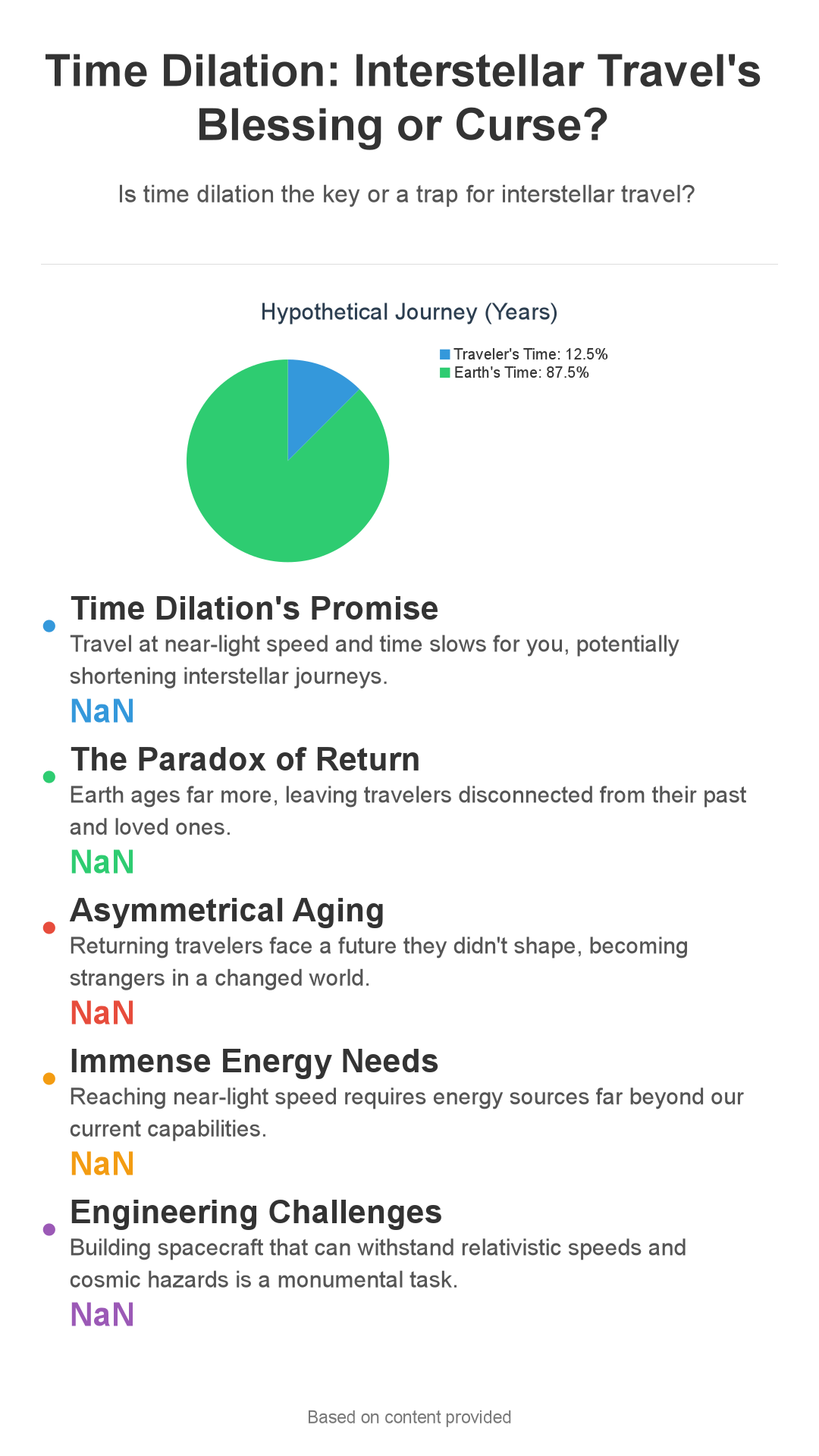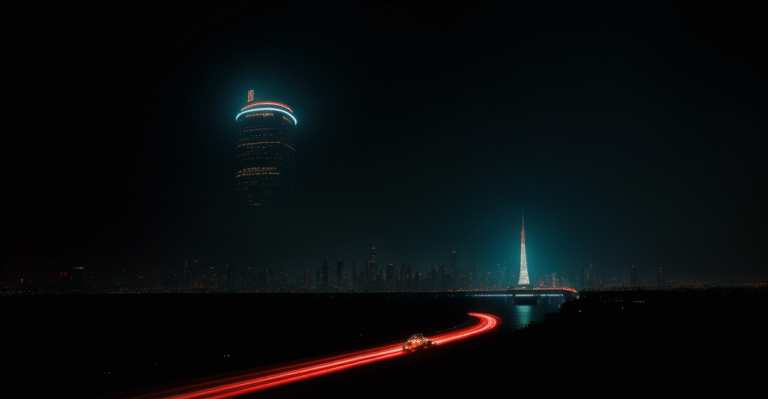
Is time dilation a innovative tool for interstellar travel, or a one-way ticket to a future where ev
Imagine a future where we leap across the galaxy, visiting distant suns and alien worlds. But what if the very physics that makes this possible also makes coming home an impossibility? Prepare to unravel the mind-bending reality of time dilation, where interstellar dreams collide with the ultimate price: a permanent farewell to everything you know.
Hey Space Cadets! Don’t forget to smash that like button and follow for more cosmic craziness! Today, we’re tackling a question that’s been bugging sci-fi writers and physicists alike: Is time dilation the golden ticket to interstellar travel, or a one-way pass to oblivion?
The Promise of Time Dilation: Bridging Immense Distances
Let’s get down to brass tacks. Time dilation, a direct consequence of Einstein’s theory of special relativity, dictates that the faster you travel, the slower time elapses for you *relative* to a stationary observer.
This isn’t just theoretical fluff; it’s been experimentally confirmed using super-precise atomic clocks flown on airplanes. fascinating, right?
Time Dilation and Special Relativity
The fundamental principle is this: the speed of light remains constant for all observers, regardless of their motion.
To reconcile this unwavering speed with the fact that different observers might perceive the same light beam differently, time itself must stretch or compress.
As your velocity increases, time dilates (stretches) for you compared to someone standing still.
Reaching for the Stars Within a Lifetime
This is where interstellar travel gets a tantalizing boost. 37 light-years away. Even at the speed of light (unattainable for anything with mass, sadly), the journey would take over four years.
However, time dilation offers the potential to compress that journey *from the traveler’s perspective*.
A Hypothetical Journey
Imagine you’re on a mission to a planet orbiting a distant star, a trip calculated to take 35 years from Earth. But because you’re hurtling through space at 99% the speed of light, time dilation dramatically kicks in.
For you, the entire voyage might only feel like 5 years! You’d arrive at your destination relatively young and ready to explore. It’s like a cosmic loophole, allowing us to traverse immense distances within a human lifetime.
The Paradox of Return: A Home Forever Changed
So far, so good, right? We’re zipping across the galaxy, barely aging. But here’s where the dream turns into a potential nightmare. What happens when you decide to return home?
Asymmetrical Aging: A One-Way Ticket to the Future
This is the core of the problem. While you experienced a mere five-year trip, Earth aged by 35 years. You emerge from your spacecraft into a world profoundly different from the one you left behind.
This asymmetrical aging is a direct consequence of time dilation.
Loss of Connection: Ghosts of the Past
Consider the implications. Your family, your friends, everyone you knew and loved, may no longer be alive. The culture you understood, the societal norms you were accustomed to, might be utterly unrecognizable.
You’re a stranger in a strange land, severed from your past and adrift in a future you didn’t shape. It’s a deeply isolating prospect.
Societal Disruption: Irrelevance or Interference?
Even if remnants of your old life persist, your experiences and knowledge could be completely irrelevant to this future society. Worse, your presence could even be disruptive.
Imagine trying to explain dial-up internet to someone raised on instantaneous quantum communication. You might be viewed as a relic, an artifact of a bygone era.
Alternatively, you might possess knowledge that could destabilize the current social order.
Technological Hurdles and the Energy Requirements of Relativistic Travel
Let’s not overlook the practical challenges. Even if we could stomach the existential dread of time dilation, the technological hurdles to achieving near-light speed are staggering.
Immense Energy Requirements: Fueling the Dream
Accelerating a spacecraft to even a fraction of the speed of light demands unimaginable quantities of energy, dwarfing anything we can currently produce.
We’d require a completely new energy source, vastly more efficient and powerful than anything we possess today. Fusion power, antimatter reactors, or even more exotic energy sources might be essential.
Engineering Challenges: Surviving the Speed
Constructing a spacecraft capable of withstanding the stresses of relativistic speeds presents another monumental challenge. The craft would need to be incredibly robust to endure the forces of acceleration and deceleration.
It would also require shielding from the intense radiation and cosmic debris encountered at such high velocities.
Navigation and Safety: Avoiding Cosmic Collisions
Navigating at near-light speed is akin to threading a needle blindfolded. Even a minuscule speck of dust could inflict catastrophic damage at those velocities.
We’d need exceptionally precise navigation systems and advanced shielding to prevent collisions. And what about the gravitational influences of nearby stars and planets?
Alternative Perspectives: Bypassing Time Dilation
So, is time dilation a deal-breaker for interstellar travel? Not necessarily. Other approaches could enable us to explore the galaxy without the time-bending consequences.
Generation Ships: A Multi-Generational Journey
One option involves traveling at sub-relativistic speeds, spanning many generations. Instead of attempting to reach our destination within a single lifetime, we could construct massive “generation ships” housing entire communities.
These ships would evolve into self-sustaining ecosystems, with successive generations living and dying aboard the vessel. While no individual would experience significant time dilation, the journey would be lengthy and arduous.
Wormholes and Other Theoretical Shortcuts: Bending Spacetime
Then there’s the realm of pure speculation: wormholes. These theoretical tunnels through spacetime could potentially allow instantaneous travel across vast distances.
However, the existence of wormholes remains purely hypothetical, and even if they exist, stabilizing and traversing them would require unimaginable amounts of energy and a mastery of gravity that eludes us.
Robotic Probes and AI Exploration: The Unmanned Frontier
Finally, we could focus on sending unmanned probes to explore the galaxy. Robotic probes don’t experience time dilation in the same way humans do, and they can be equipped with advanced sensors and AI to gather data and transmit it back to Earth.
This approach would avoid the human cost of interstellar travel, but it would also lack the direct human experience of exploring new worlds.
So, what do YOU think? Is the potential reward of human exploration worth the risk of irreversible disconnection, or should we stick to sending robots and AI? Let me know in the comments below! And don’t forget to subscribe for more fascinating science and speculative adventures!

Enjoyed this? Check out our YouTube channel for video versions!
Enjoyed this? Check out our YouTube channel for video versions!



